The gluteal region is located posterior to the pelvic girdle and extends distally into the upper leg Leg The lower leg, or just "leg" in anatomical terms, is the part of the lower limb between the knee and the ankle joint. The bony structure is composed of the tibia and fibula bones, and the muscles of the leg are grouped into the anterior, lateral, and posterior compartments by extensions of fascia. Leg: Anatomy as the posterior thigh Thigh The thigh is the region of the lower limb found between the hip and the knee joint. There is a single bone in the thigh called the femur, which is surrounded by large muscles grouped into 3 fascial compartments. Thigh: Anatomy. The gluteal region consists of the gluteal muscles and several clinically important arteries Arteries Arteries are tubular collections of cells that transport oxygenated blood and nutrients from the heart to the tissues of the body. The blood passes through the arteries in order of decreasing luminal diameter, starting in the largest artery (the aorta) and ending in the small arterioles. Arteries are classified into 3 types: large elastic arteries, medium muscular arteries, and small arteries and arterioles. Arteries: Histology, veins Veins Veins are tubular collections of cells, which transport deoxygenated blood and waste from the capillary beds back to the heart. Veins are classified into 3 types: small veins/venules, medium veins, and large veins. Each type contains 3 primary layers: tunica intima, tunica media, and tunica adventitia. Veins: Histology, and nerves. The muscles of the gluteal region help to move the hip joint Hip joint The hip joint is a ball-and-socket joint formed by the head of the femur and the acetabulum of the pelvis. The hip joint is the most stable joint in the body and is supported by a very strong capsule and several ligaments, allowing the joint to sustain forces that can be multiple times the total body weight. Hip Joint: Anatomy during walking, running, standing, and sitting and are specialized for bearing weight and maintaining the horizontal balance of the pelvis Pelvis The pelvis consists of the bony pelvic girdle, the muscular and ligamentous pelvic floor, and the pelvic cavity, which contains viscera, vessels, and multiple nerves and muscles. The pelvic girdle, composed of 2 "hip" bones and the sacrum, is a ring-like bony structure of the axial skeleton that links the vertebral column with the lower extremities. Pelvis: Anatomy.
Last updated: Dec 15, 2025
The gluteal region is the area posterior to the pelvic girdle between the iliac crest and the gluteal fold. The region comprises the following:
Muscle groups:
Nerves:
Vessels:
Foramina:
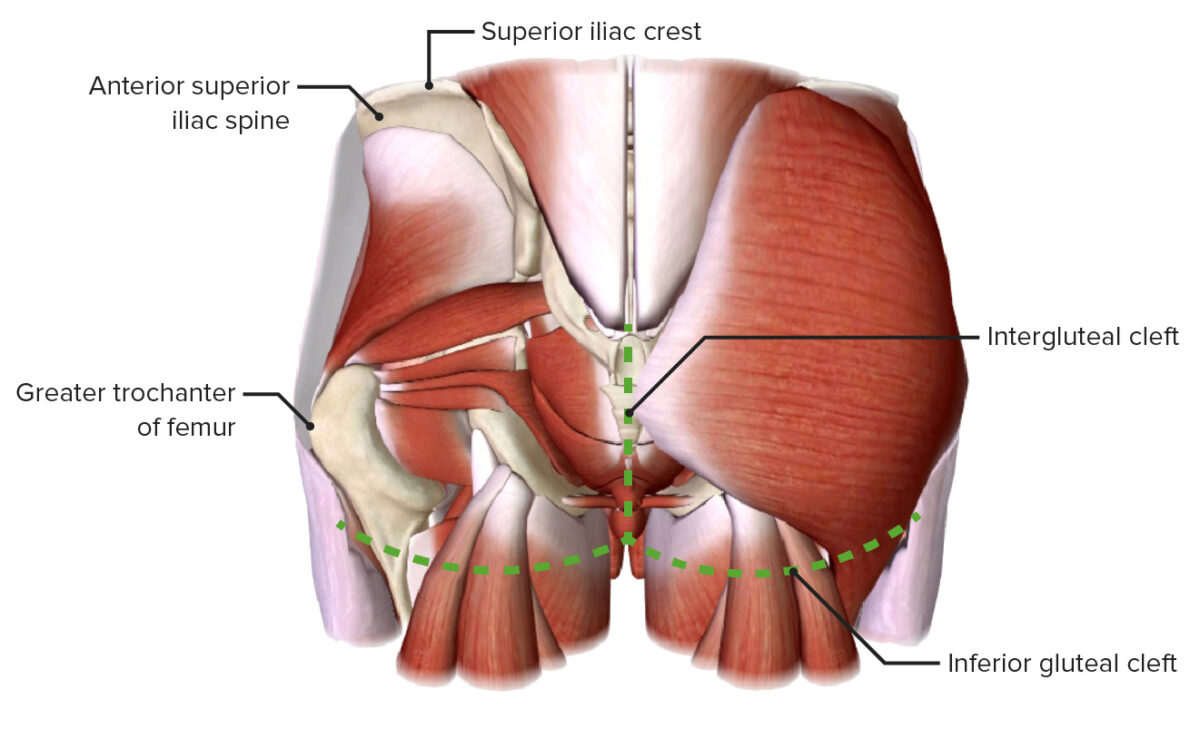
Boundaries of the gluteal region
Image by BioDigital, edited by Lecturio.The gluteal muscles can be divided into 2 groups that are responsible for the main movements of the hip joint Hip joint The hip joint is a ball-and-socket joint formed by the head of the femur and the acetabulum of the pelvis. The hip joint is the most stable joint in the body and is supported by a very strong capsule and several ligaments, allowing the joint to sustain forces that can be multiple times the total body weight. Hip Joint: Anatomy:
| Muscle | Origin | Insertion | Nerve supply | Function |
|---|---|---|---|---|
| Gluteus maximus | Ilium posterior to the posterior gluteal line, posterior sacrum Sacrum Five fused vertebrae forming a triangle-shaped structure at the back of the pelvis. It articulates superiorly with the lumbar vertebrae, inferiorly with the coccyx, and anteriorly with the ilium of the pelvis. The sacrum strengthens and stabilizes the pelvis. Vertebral Column: Anatomy and coccyx Coccyx The last bone in the vertebral column in tailless primates considered to be a vestigial tail-bone consisting of three to five fused vertebrae. Vertebral Column: Anatomy, and sacrotuberous ligament | Iliotibial tract Iliotibial tract Thigh: Anatomy (75%) and gluteal tuberosity (25%) | Inferior gluteal nerve ( S1 S1 Heart Sounds, S2 S2 Heart Sounds) | |
| Gluteus medius | External ilium between the anterior and posterior gluteal lines | Greater trochanter of the femur | Superior gluteal nerve (L4, L5, S1 S1 Heart Sounds) |
|
| Gluteus minimus | External ilium between the anterior and inferior gluteal lines | Greater trochanter of the femur | ||
| Tensor fasciae latae | Anterior superior iliac spine Anterior Superior Iliac Spine Chronic Apophyseal Injury | Iliotibial tract Iliotibial tract Thigh: Anatomy to the lateral condyle of the tibia Tibia The second longest bone of the skeleton. It is located on the medial side of the lower leg, articulating with the fibula laterally, the talus distally, and the femur proximally. Knee Joint: Anatomy |
|
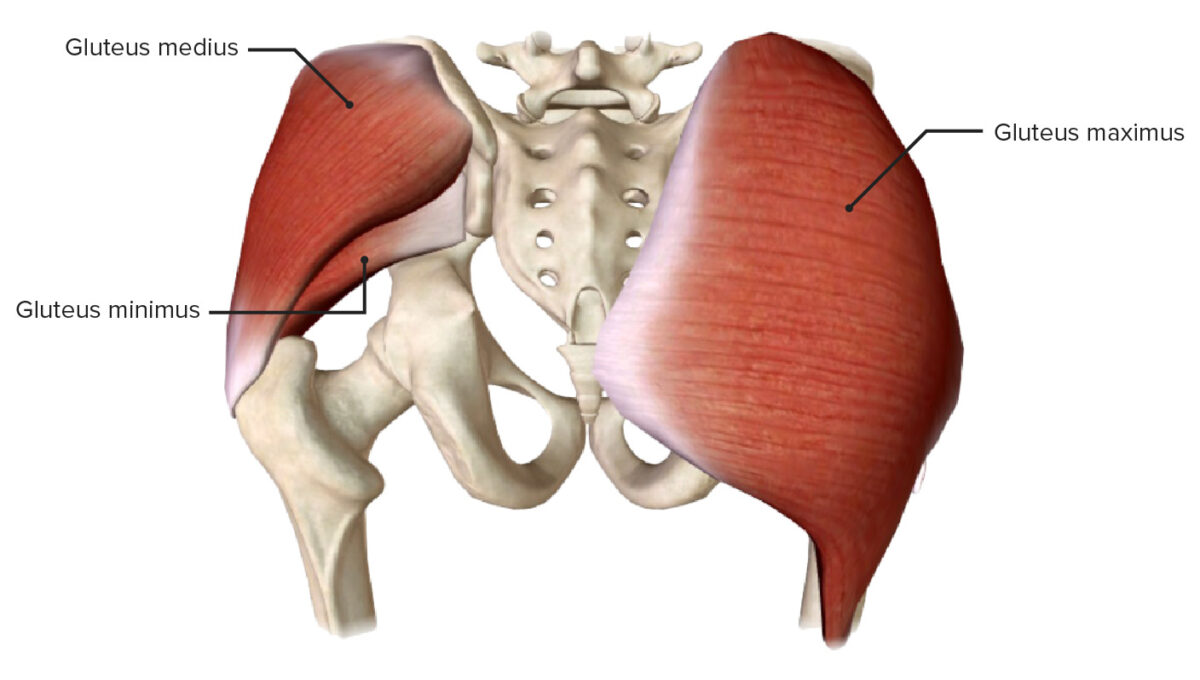
The 3 gluteal muscles: gluteus maximus, gluteus medius, and gluteus minimus
Image by BioDigital, edited by Lecturio.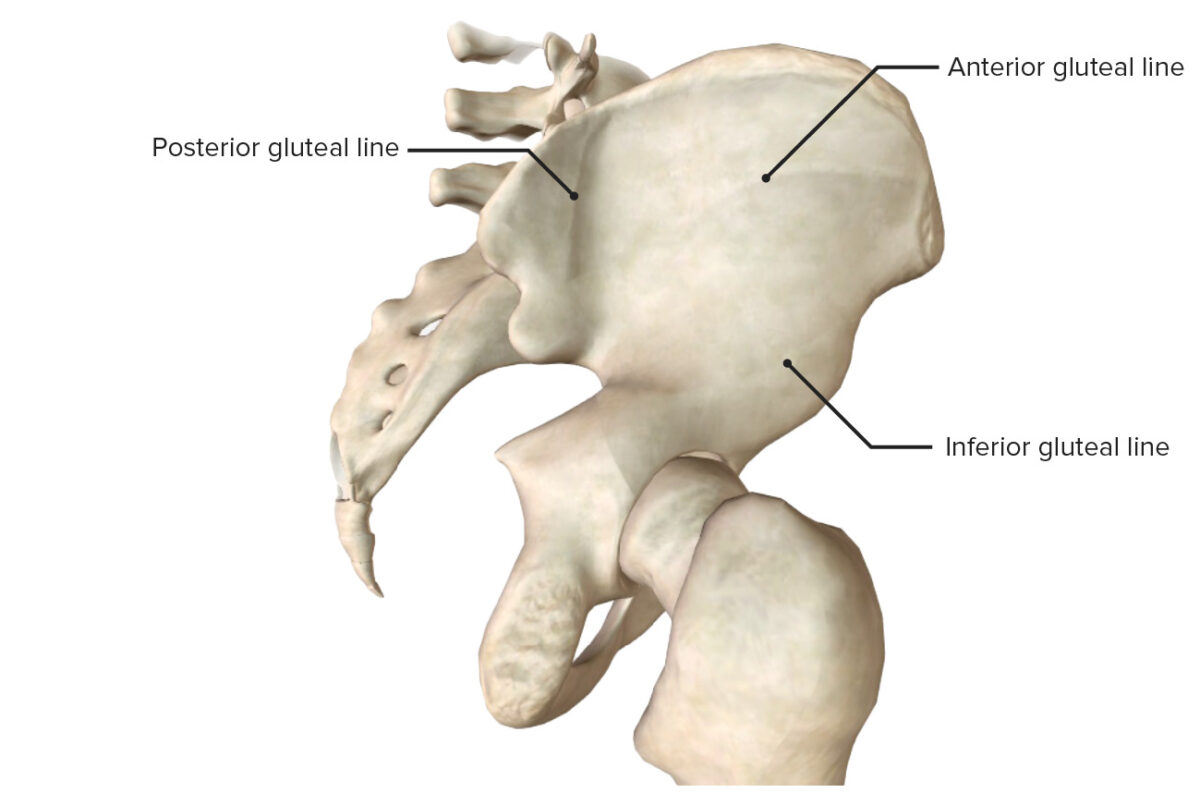
The gluteal lines of the ilium, created by the insertion of the gluteal muscles
Image by BioDigital, edited by Lecturio.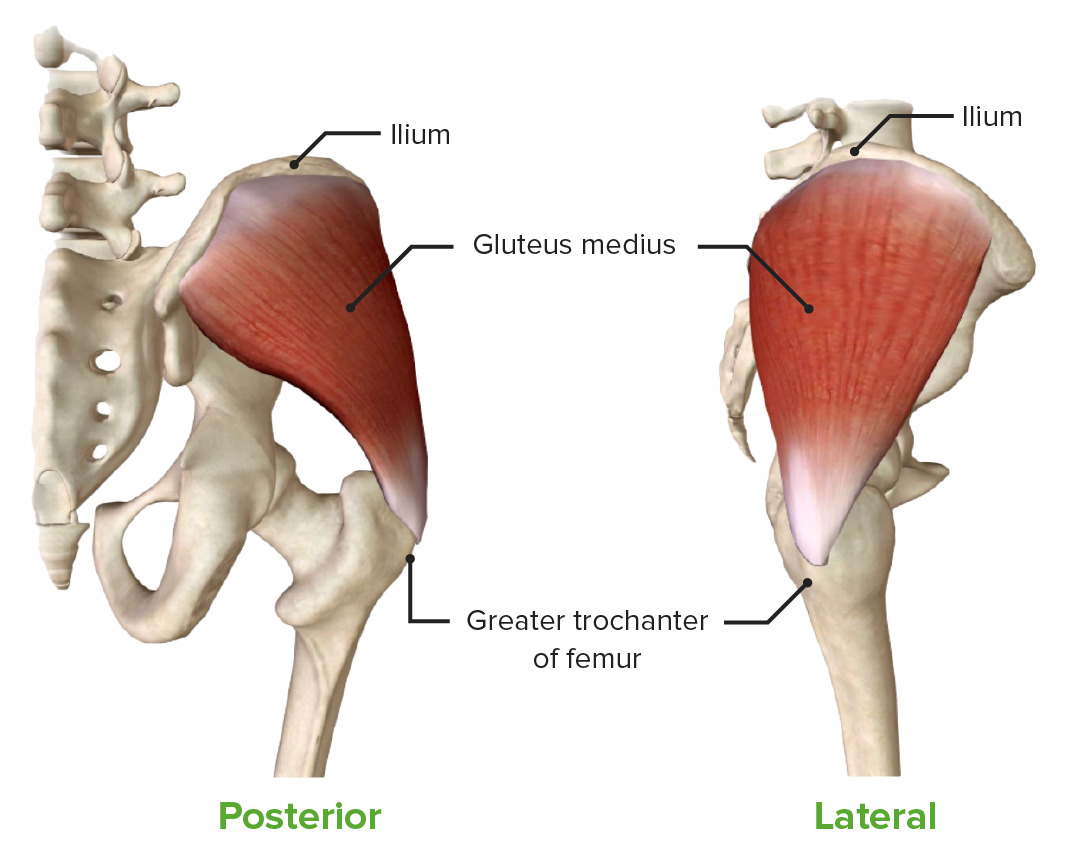
Gluteus medius muscle: featuring its origin and insertion in posterior and lateral views
Image by BioDigital, edited by Lecturio.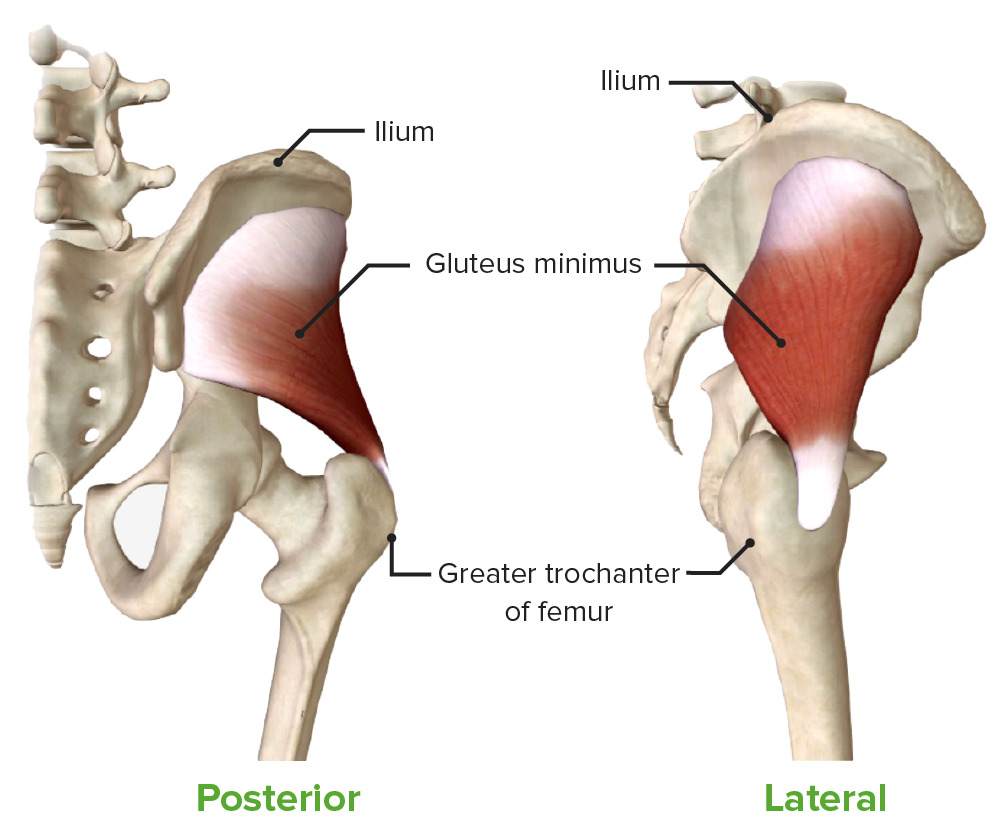
Gluteus medius muscle lateral and posterior views
Image by BioDigital, edited by Lecturio.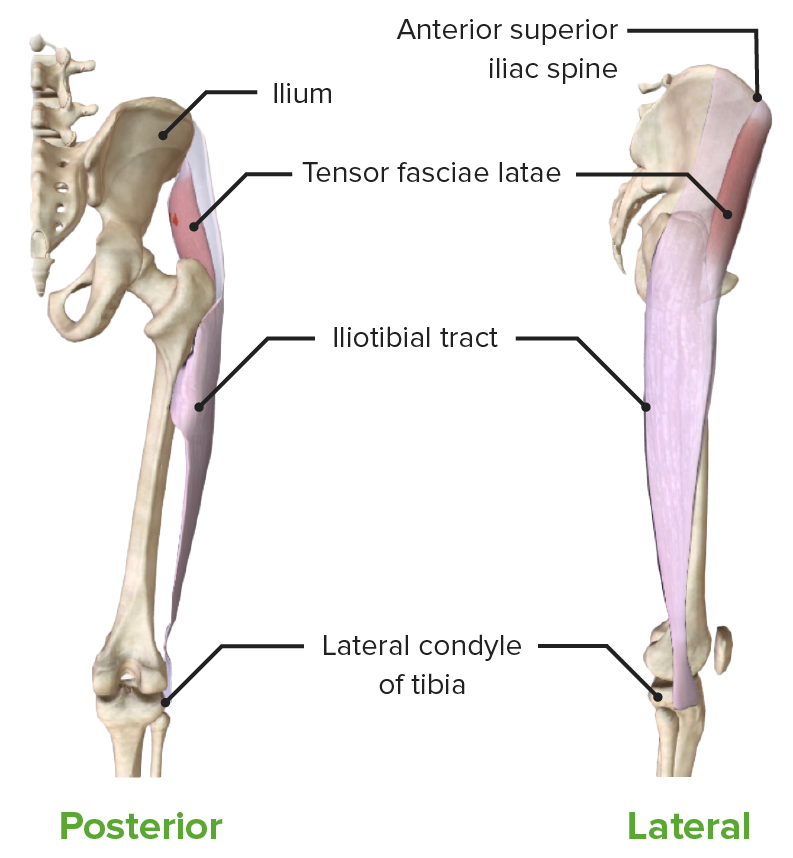
Tensor fasciae latae muscle: featuring its origin and insertion in posterior and lateral views
Image by BioDigital, edited by Lecturio.| Muscle | Origin | Insertion | Nerve supply | Function |
|---|---|---|---|---|
| Piriformis Piriformis Vagina, Vulva, and Pelvic Floor: Anatomy |
|
Greater trochanter (superior surface) | Anterior rami of S1 S1 Heart Sounds |
|
| Gemelli |
|
Greater trochanter (medial surface) | ||
| Obturator internus Obturator internus Vagina, Vulva, and Pelvic Floor: Anatomy |
|
Greater trochanter (medial surface) | ||
| Quadratus femoris |
|
Intertrochanteric crest | N to the quadratus femoris (L5, S1 S1 Heart Sounds) |
|
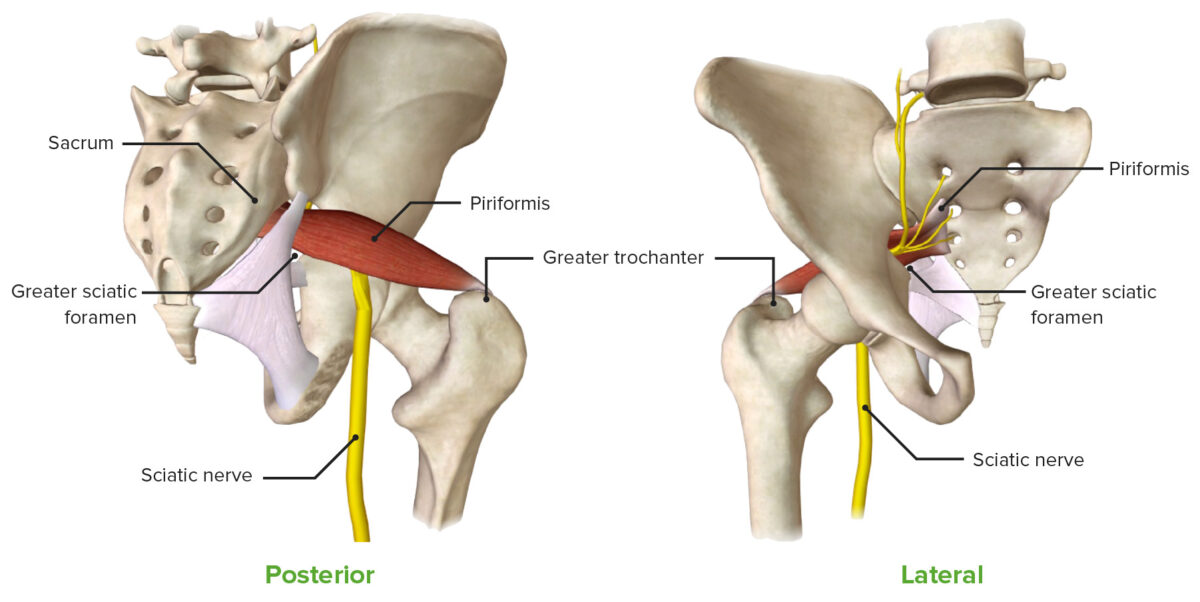
Piriformis muscle: featuring its origin and insertion in posterior and anterior views, along with its close spatial relationship to the sciatic nerve
Image by BioDigital, edited by Lecturio.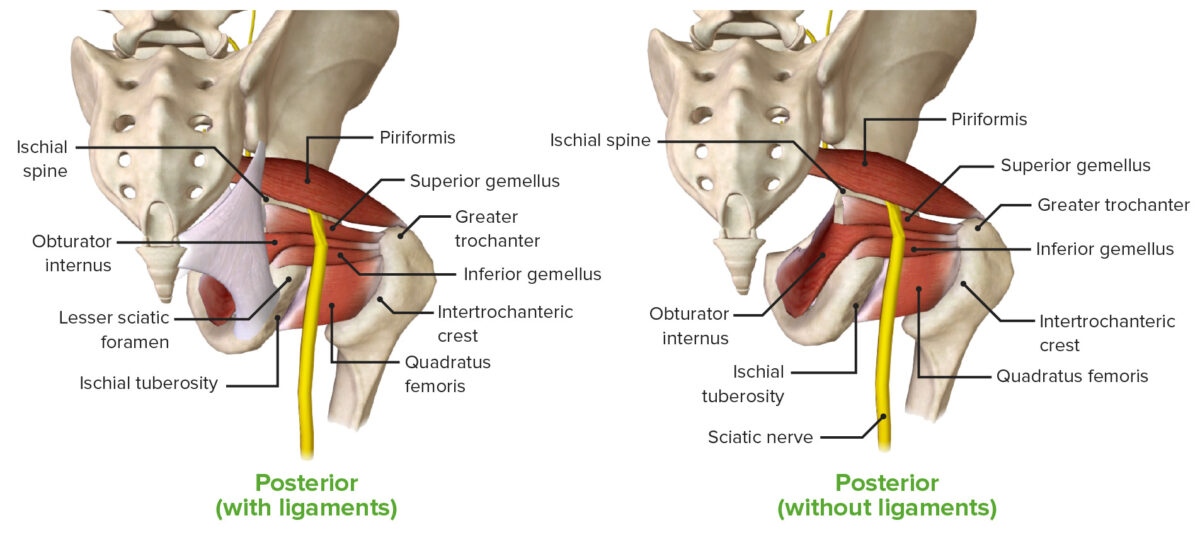
The gluteal region, featuring the deep gluteal muscles: piriformis, obturator internus, gemellus superior, gemellus inferior, and the quadratus femoris
Image by BioDigital, edited by Lecturio.The superior and inferior foramina are formed by the following ligaments inserted into the bony pelvis Pelvis The pelvis consists of the bony pelvic girdle, the muscular and ligamentous pelvic floor, and the pelvic cavity, which contains viscera, vessels, and multiple nerves and muscles. The pelvic girdle, composed of 2 “hip” bones and the sacrum, is a ring-like bony structure of the axial skeleton that links the vertebral column with the lower extremities. Pelvis: Anatomy:
The sacrospinous and sacrotuberous ligaments create the following foramina, or passageways:
| Greater sciatic foramen | Lesser sciatic foramen | |
|---|---|---|
| Boundaries |
|
|
| Contents |
|
|
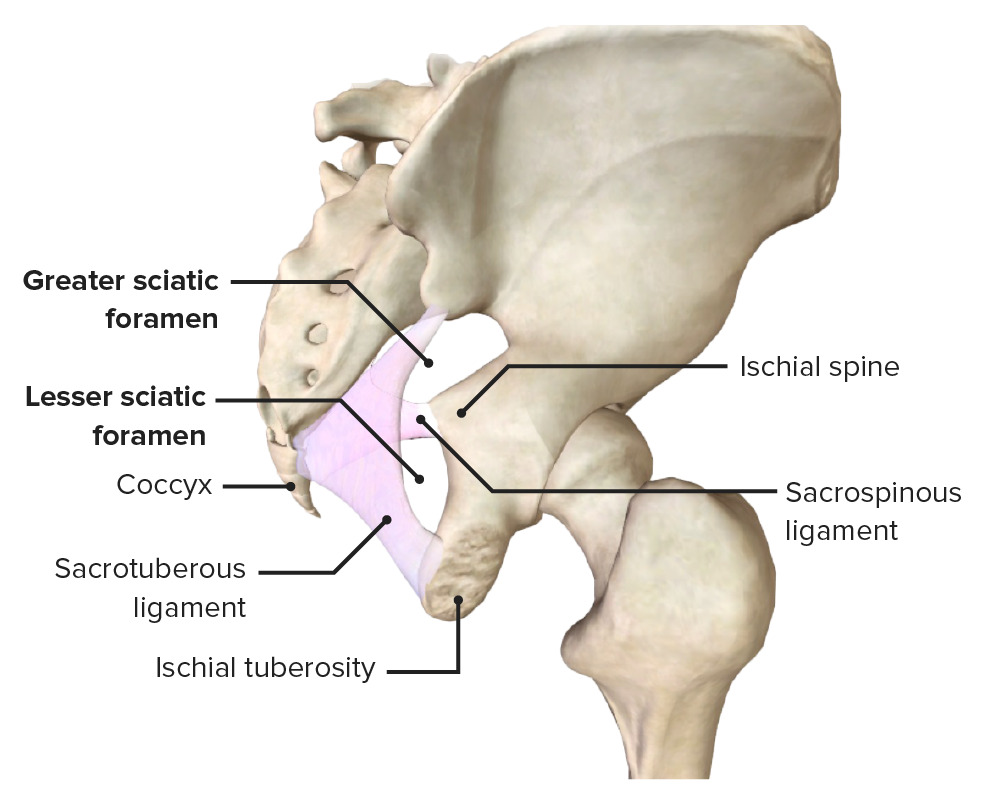
The greater and lesser sciatic foramina are created by the spaces between the sacrospinous and sacrotuberous ligaments.
Image by BioDigital, edited by Lecturio.Two branches drain from the internal iliac arteries Arteries Arteries are tubular collections of cells that transport oxygenated blood and nutrients from the heart to the tissues of the body. The blood passes through the arteries in order of decreasing luminal diameter, starting in the largest artery (the aorta) and ending in the small arterioles. Arteries are classified into 3 types: large elastic arteries, medium muscular arteries, and small arteries and arterioles. Arteries: Histology:
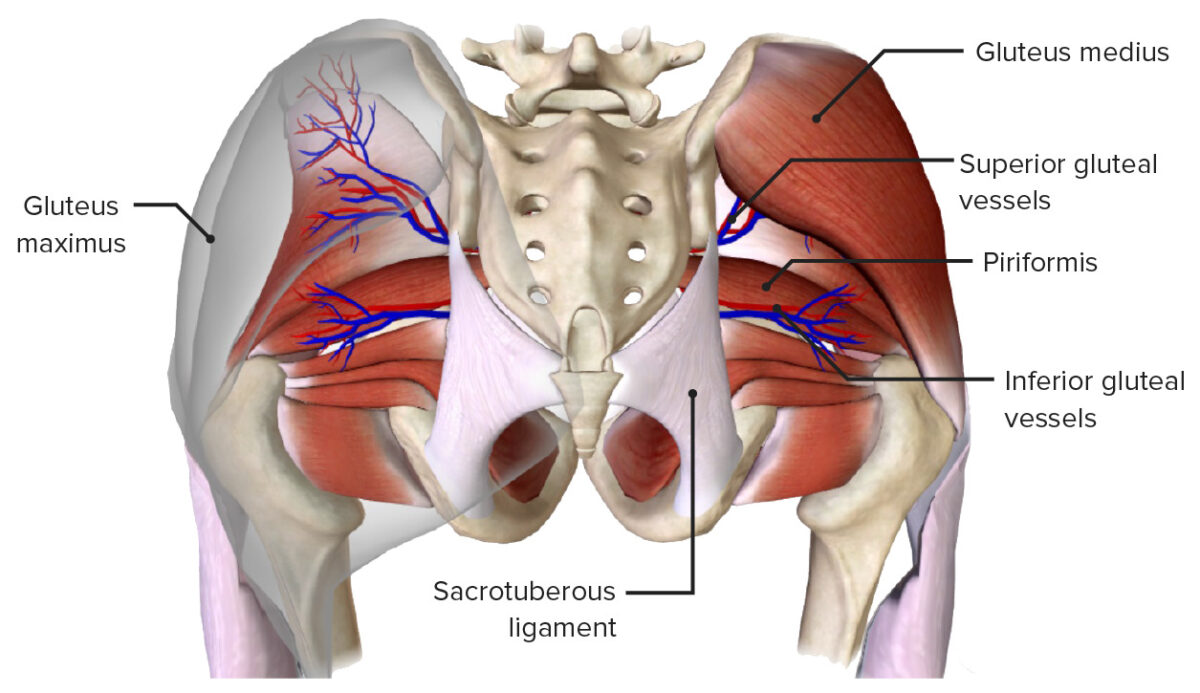
The gluteal vessels emerging through the suprapiriform foramen and infrapiriform foramina
Image by BioDigital, edited by Lecturio.| Nerve | Origin | Muscles supplied |
|---|---|---|
| Sciatic | Anterior and posterior divisions of the nerve roots L4-S3 |
|
| Superior gluteal | L4-S1 ( Sacral plexus Sacral plexus Pelvis: Anatomy) |
|
| Inferior gluteal | L5-S2 ( Sacral plexus Sacral plexus Pelvis: Anatomy) |
|
| Posterior femoral cutaneous | S1-S3 ( Sacral plexus Sacral plexus Pelvis: Anatomy) |
|
| Pudendal | S2-S4 (Pudendal plexus) |
|
| Sacral plexus Sacral plexus Pelvis: Anatomy | L4-S4 (direct branches) |
|
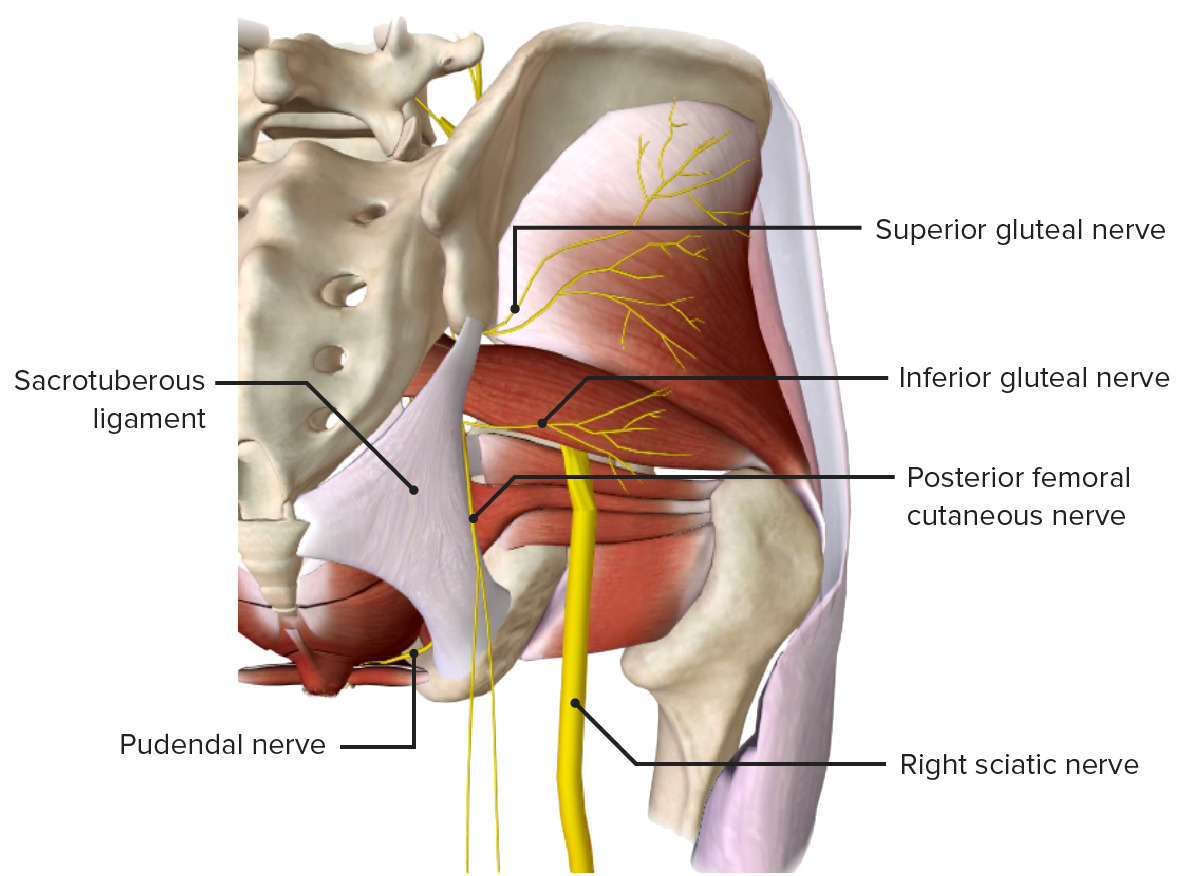
The deep layer of the gluteal region, featuring the nerves of the gluteal region
Image by BioDigital, edited by Lecturio.The following are clinically relevant to the gluteal region: